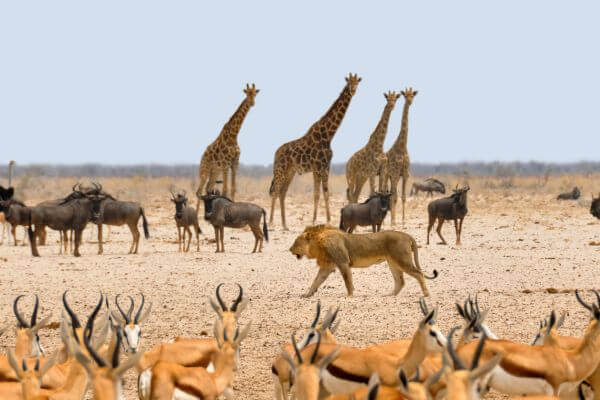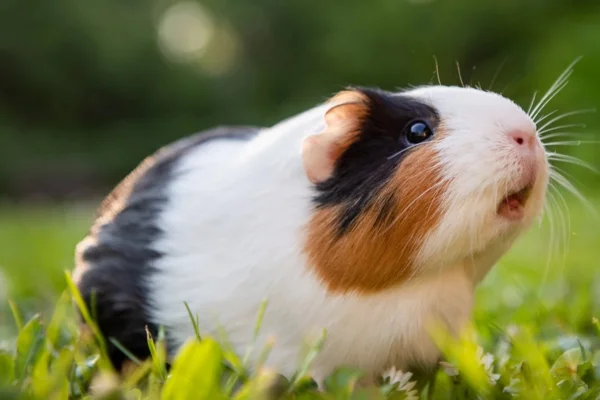Animal Communication and Recent Discoveries
Animal communication plays a vital role in survival and interaction between species. Recently, scientific discoveries have revealed new insights into how animals communicate and understand each other. In this article, we will explore recent advances in animal communication research, revealing intriguing methods and inspiring examples of interactions between species.
Through a variety of signals and behaviours, animals use communication to transmit information that is essential for reproduction, survival and social organization. We discovered that animals employ a diversity of communication methods, including vocalizations, gestures and chemical signals.
Understanding these communication mechanisms is fundamental to expanding our knowledge of the animal kingdom and its ability to communicate in surprising ways. Join us as we delve into this fascinating field of animal communication.
Contents

The Language of Color: Visual Communication in the Animal Kingdom
Color language plays a fundamental role in visual communication in the animal kingdom. Recent studies reveal that animals use color significantly to express themselves and interact with each other. One notable example is the chameleon, which uses its color changes as a form of communication. Birds also display vibrant plumage to attract mates.
Through visual communication, animals can convey important information using colors. From warning signals to partner recognition, colors play a very important role. For example, the bright colors and distinctive patterns on butterflies and beetles serve as a warning to possible predators, while gestures and postures are also crucial elements in animal communication.
Visual communication in the animal kingdom is fascinating and diverse. Colors, gestures and postures are important tools for transmitting vital messages. Understanding the language of color allows us to appreciate the complexity and beauty of visual communication in the animal kingdom, revealing the intricate mechanisms by which they express themselves and interact in the natural world.
Symphonies of Nature: Sound Communication between Animals
Sound communication is an essential way in which animals communicate and interact in the animal kingdom. A variety of sounds play key roles in animal communication, from alarm calls to mating songs. It is through these sounds that animals transmit information that is essential for survival and reproduction.
In the wild, birds display an impressive variety of vocalizations, from melodic songs to warning calls. Birds use these sounds to mark territory, attract mates and warn of possible dangers. This symphony of sounds creates a unique atmosphere in nature.
In addition to birds, other animals also communicate using sounds. Dolphins, whales and elephants, for example, use low-frequency calls to communicate over long distances. These sounds, often inaudible to humans, play a crucial role in social coordination and maintaining family ties.
The Power of Pheromones: Exploring Chemical Communication in Animals
Pheromones are chemical substances produced and released by animals to transmit specific messages to other individuals of the same species.
By detecting and interpreting pheromones, animals are able to transmit vital information, such as territory identification, alarm signals, sexual attraction and even trail marking. This form of chemical communication is especially important for species that have nocturnal habits or live in challenging environments.
Pheromones play a crucial role in reproductive behaviour, social cohesion and the organization of insect colonies. They are able to trigger specific behavioral responses in the receiving individuals, influencing their mating, social interactions and even their physiology. Understanding pheromones and their importance in animal communication has been the subject of study in various scientific fields, such as ethology and ecology.
Surprising Interactions Between Species: Animal Communication Across Borders
The surprising interactions between species are fascinating examples of animal communication. Recent studies have revealed remarkable cases in which animals from different species cooperate and communicate with each other. These interactions challenge the traditional boundaries of animal communication, showing that the exchange of information is not limited to the same species.
In many of these cases, animals of different species work together in pursuit of common goals. Through vocalizations, visual signals or even chemical signals, they warn each other of impending dangers, such as the presence of predators. In addition, these interactions can also involve cooperation in the search for food, where different species come together to maximize their chances of success.
These trans-specific interactions challenge our previous conceptions of animal communication, thus showing that the exchange of information is not restricted to individuals of the same species. They highlight the complexity and flexibility of animals' communicative abilities, revealing an even deeper dimension of animal life. As such, these discoveries broaden our knowledge of animal communication and lead us to question the limits and possibilities of this form of interaction.
Animal Communication and Intelligence
Intelligence in animals has been the subject of study and fascination over the years, so scientific advances in animal communication have revealed that many species have impressive cognitive abilities. For example, studies show that dolphins are able to communicate using a complex series of sounds and gestures, demonstrating a high level of social intelligence. Primates such as chimpanzees use gestures and vocalizations to communicate, displaying an advanced understanding of symbolic communication.
Animal communication is also associated with problem-solving and decision-making. Research shows that some birds, such as crows and parrots, are able to solve complex puzzles and even use tools to achieve their goals. So these examples show that communication plays a crucial role in demonstrating animal intelligence.
It is important to note that scientific advances in animal communication help us to better understand the complexity of social and cognitive interactions in other species. Through these studies, we are able to appreciate the diversity of communication systems and understand how animals communicate and express themselves. we can conclude that these discoveries reinforce the importance of promoting conservation and respect for all forms of life, recognizing their ability to communicate and interact in surprising ways.
Implications for Conservation and Coexistence
Animal communication plays a crucial role in the conservation and coexistence of different species. By understanding communication patterns, scientists have gained valuable information to protect and preserve wildlife. Recent studies have highlighted the importance of communicative behaviors in the survival and balance of ecosystems. Thus, these scientific advances in animal communication have provided new perspectives for the conservation of biodiversity.
Through communication, animals establish complex relationships and interact in their natural environments. Information transmitted through visual, sound and chemical signals plays a fundamental role in the harmonious coexistence of species. Understanding these communication patterns enables the development of effective conservation strategies, such as the creation of protected areas, the promotion of ecological corridors as well as the proper management of shared habitats.
In addition, understanding animal communication can help resolve conflicts between wild animals and human communities. By understanding the warning signals emitted by certain species, it is possible to implement precautionary measures to avoid conflicts and minimize negative impacts. In this way, animal communication can also be used as an educational tool, sensitizing people to the importance of conservation and encouraging sustainable coexistence practices.
We can then conclude:
That in this way, animal communication plays a vital role in wildlife conservation and in promoting harmonious coexistence between species. Science in this area has therefore provided valuable insights and tools for protecting biodiversity and establishing effective conservation strategies.
As we advance in our understanding of animal communication, we are constantly surprised by its complexity and diversity. Recent discoveries reveal a vibrant world of surprising interactions between species that goes beyond our imagination.
By understanding and respecting animal communication, as well as exploring color language, sound symphonies, pheromones, interspecies communication, communicative intelligence and its implications, we expand our knowledge of the richness of the animal kingdom and the importance of protecting and valuing this unique form of expression. May these discoveries inspire us to promote harmony and respect for all forms of life on our planet.
Read also this article in our Blog
If you like our Prompt, please leave a comment.
Thanks for stopping by, check out our other work too
https://vettopbr.com/tosse-em-caes/







